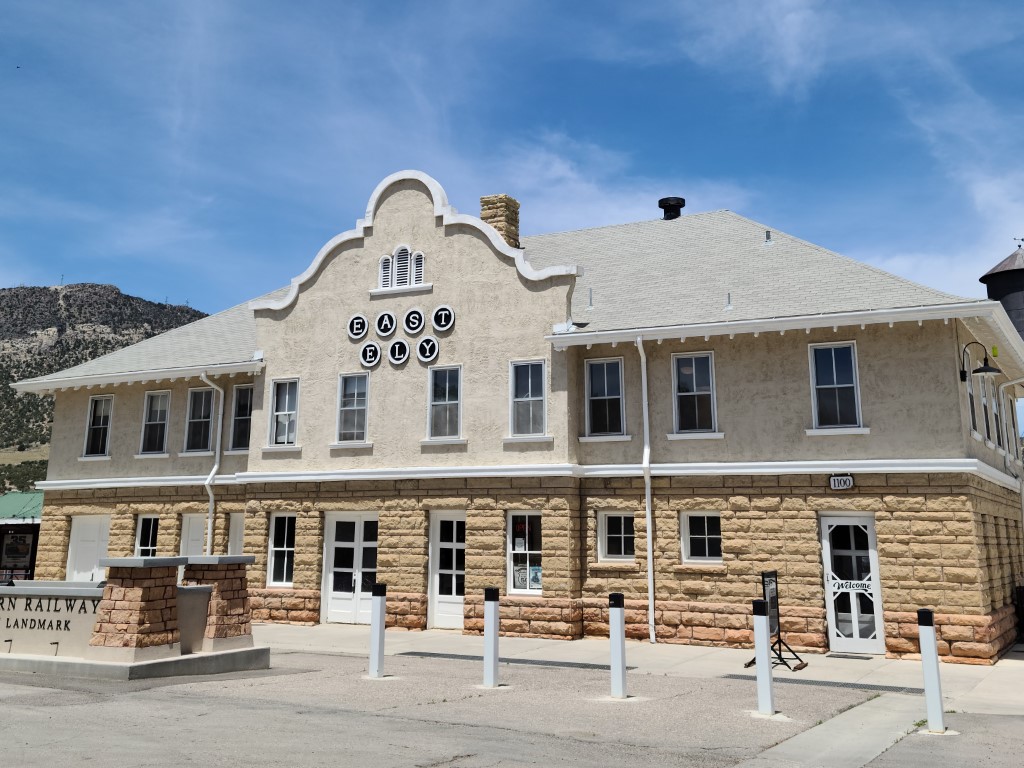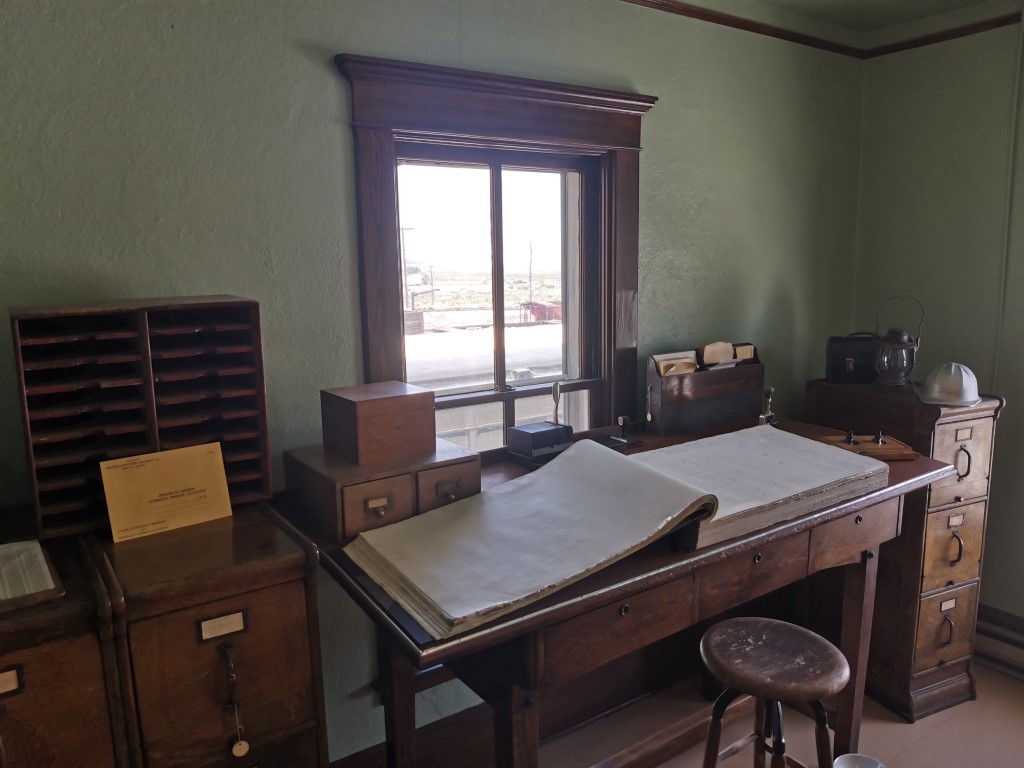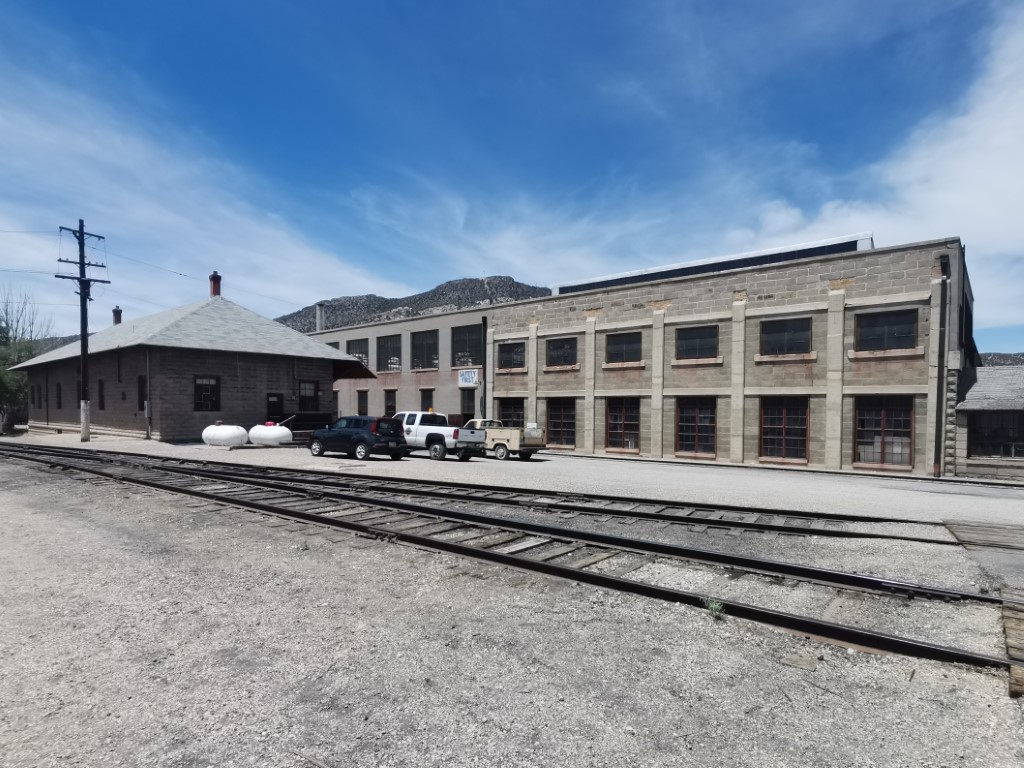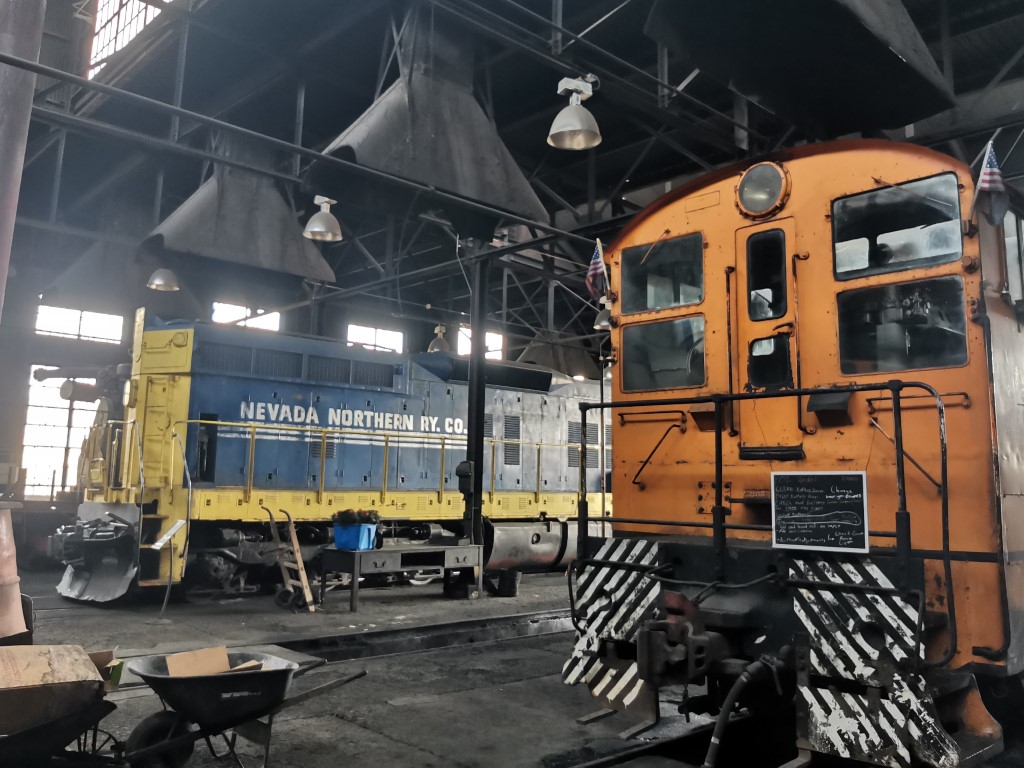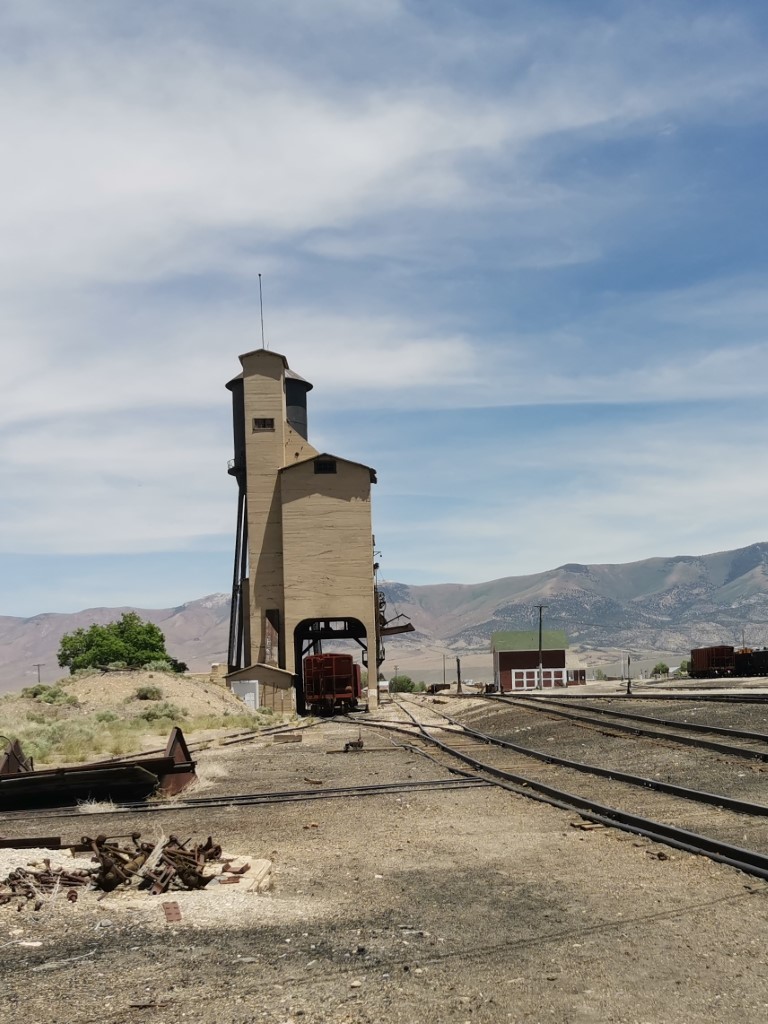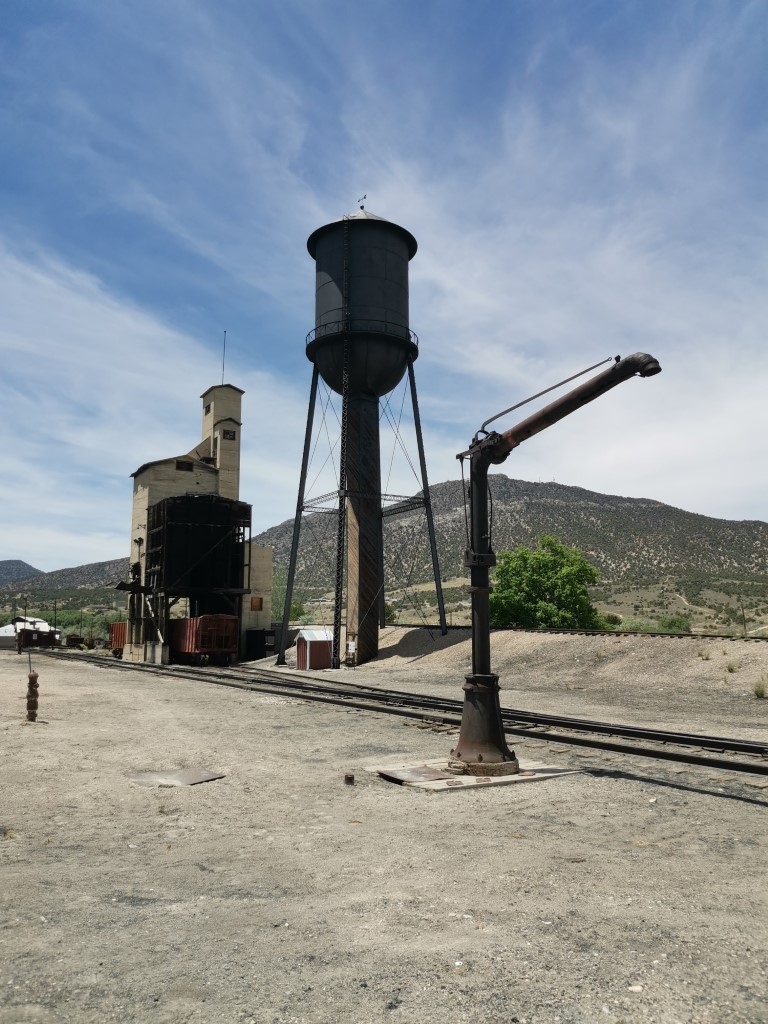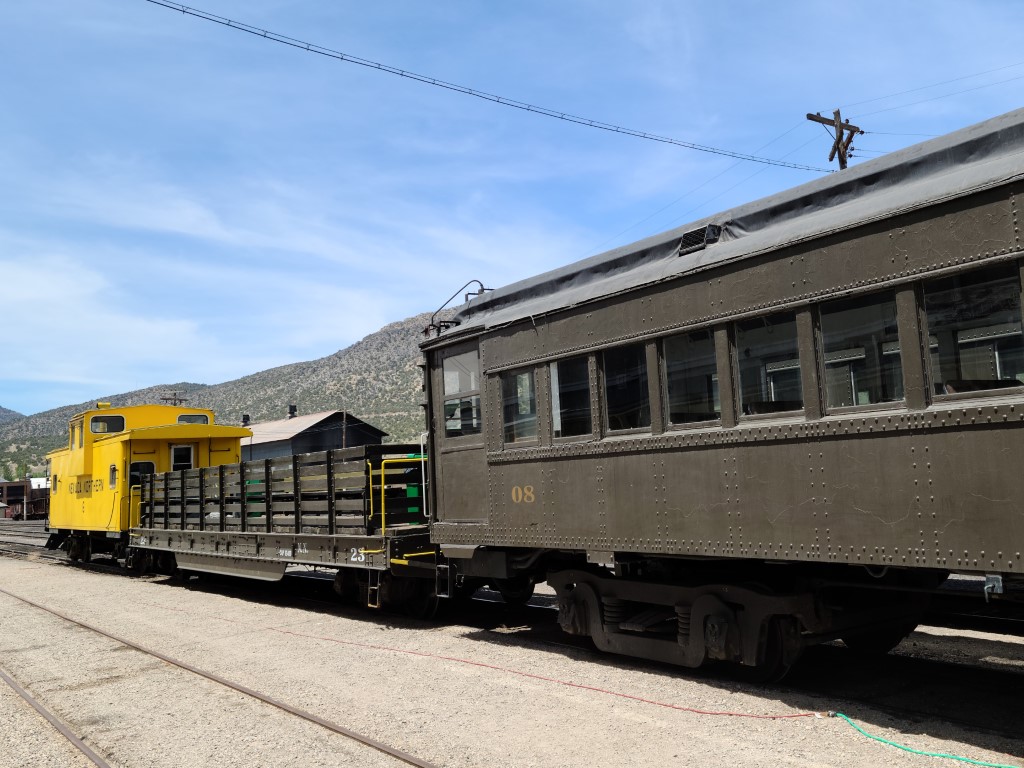The museum complex is sitting on 56 acres and has 63 structures. The collection is here not only on display but also to operate. You can see how original engines are serviced, repaired, and operated using original equipment and following original procedures. Museum has four steam locomotives, nine diesel locomotives, several coach cars, and other service equipment. Museum offers several options for visitors: self-guided tours, train rides and hands-on adventure.
Self-guided tours
For the tours, there is two main option: a short walk (blue color below), and a long walk (dotted line). If you have kids or have little of spare time take a short tour, it will give you a main view of the railroad yard function. And if not in a rush enjoy the full history of the railroad museum with a long tour.

Short tour
If you have just an hour to spend check out the East Ely Depot first. It was constructed in 1907 in a “Mission revival” style and used for passenger service. On the second floor, you will see railroad offices in the same way as they’ve been left in 1983 with papers still lying on the tables. Then go west along Freight House that prior “highway” age served as the main goods transportation center between Ely and the rest of the states. Further west along the tracks you find The Firehouse (they had their own fire department), The Bus Garage (built for buses in 1941 to replace passenger trains), the Garage that was used for HyRail storage (a special vehicle that could drive on the road and railroad too). Next stop across the track (Watch for trains) Machine Shop and Enginehouse Building. Here you can see real magic, all the repairs are done in that shop, and all the machines and tools around are in proper working condition. Adjoined Enginehouse has room for up to 12 locomotives and houses all active locomotives of the museum.
Long tour
Have extra time? Go east to the biggest building, it’s the Repair in Place building. Most of the cars were used for transporting ore and because of that could be easily damaged. Before 1945 all repairs to those cars were done just outside in any weather conditions. After building completion it became a much more convenient process. Behind that building, you can see another “relict” – a carpenter shop, where everything looks like workers stepped out and be back any moment. The next most noticeable structure would be Coaling tower, which is used for filling coal in a tender (coal car) to supply steam engines. Adjacent water tower and filling spigot were also primarily used by steam locomotives. From here continue to the simple building that looks like a garage (it’s actually a garage for hy-rail vehicle nowadays), but in the past, it was “Ice House”. Ice was cut into cubes during winter and stored inside for use during the whole year, thanks to foot-thick sawdust insulation in the walls. The last building on your way would be the “Chief Engineer’s Office”, used by civil engineers to manage all yard tracks and structures. Funny it was moved 4 times: built in Curry in 1908, moved to Ely, then McGill, and finally to East Ely railyard. Hope you enjoyed that railroad adventure in the past!
Train rides
It’s a nice option to travel in the past. You will find yourself in the early 1900s taking the train to a nearby ghost town. You can choose between a regular coach and an open car, and also could freely be switched during a ride. For a private party, you can take the whole caboose. For the front experience rides in a locomotive with an engineer are also available. During different seasons theme trains are present (Christmas, Robbery, etc). For the schedule and pricing visit the museum website.
Hands-on Adventure
And if you real railroad enthusiast museum offers special programs for you. “Be the Engineer” gives you skills to ride steam or diesel locomotive. “HyRail Experience” provide your enjoyable ride on a restored 1956 Pontiac on tracks and road. Photo shoots and photo workshops could help you with picture needs. And for true hardcore railroad lovers rail camp is available. It’s named “Railroad Reality Week” because you will spend a whole week doing different railyard tasks.
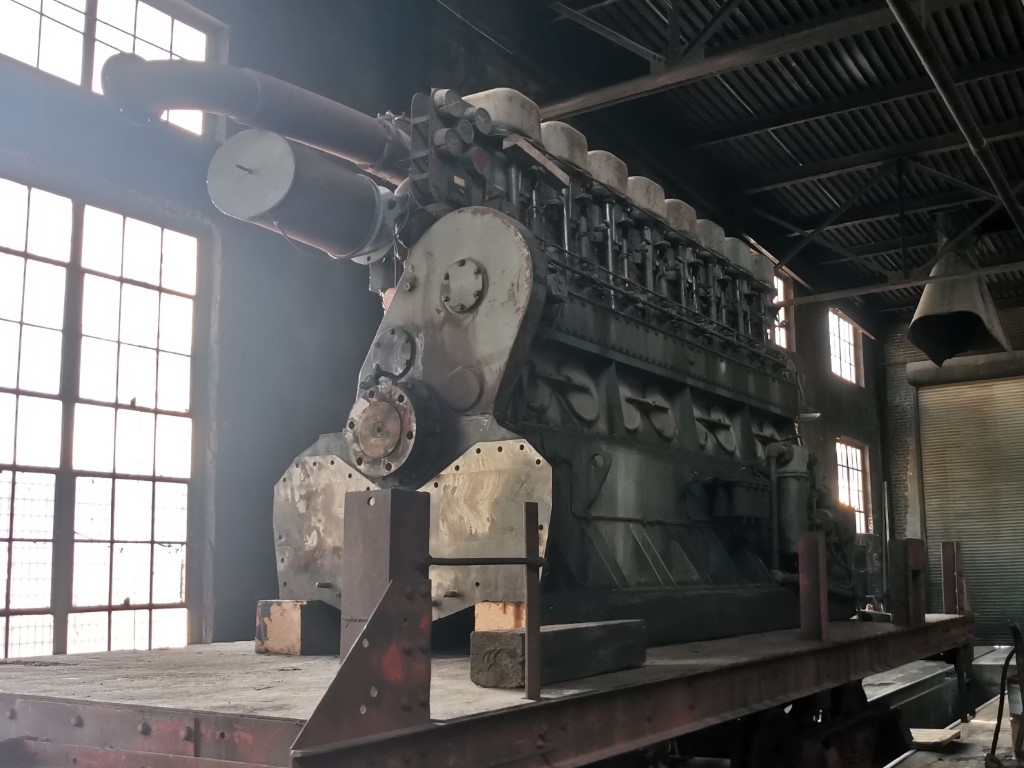
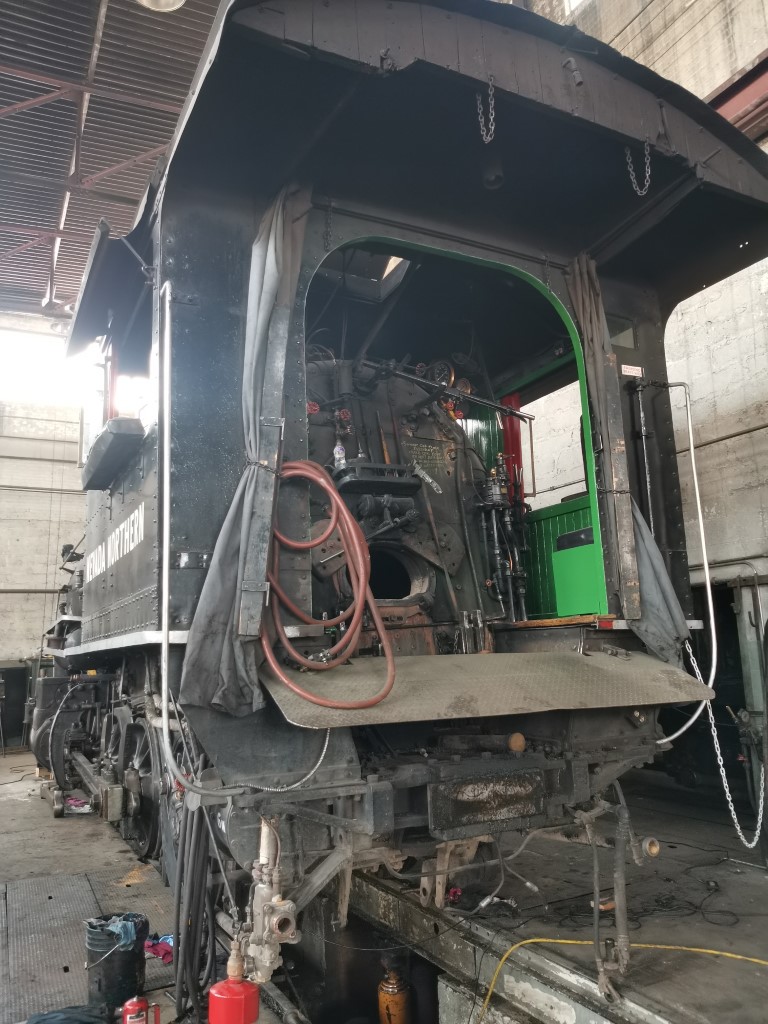
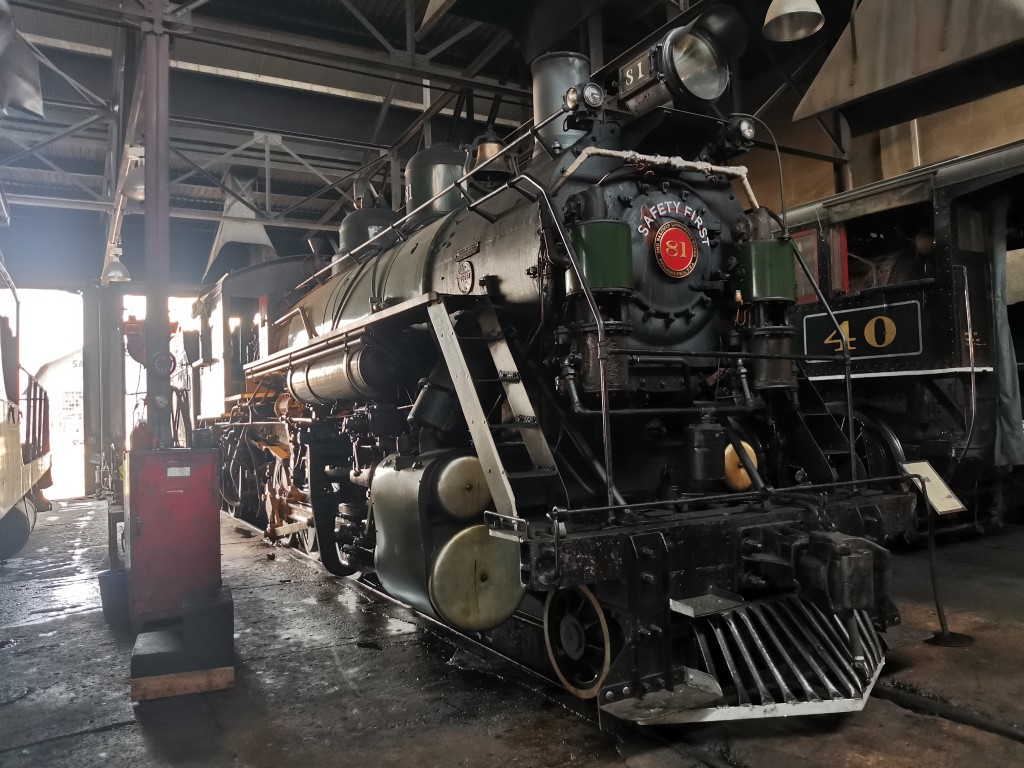
History
Beginning
The story of Nevada Northern Railway begins in earlier twenty century. As usual around that part of the state mining was a reason for that. Further development of new copper mines required some kind of transportation between mines, smelters, and for the shipping of the final product. Since the owner of most of the mines was Mark Requa, president of the Eureka and Palisade Railroad in central Nevada, he looked no other way than to build the new railroad. All studies show that the easiest route would be to the north where Cobre will connect to the national network. On June 1st, 1905 Company was formed and construction began a few months later on September 11th from Cobre to the south. The last “symbolic” spike was nailed by Requa itself on September 29th, 1906, that spike was made out of copper. Additional lines were constructed in 1907-1908 to connect local mines in Ruth, to the southwest of Ely, and the newly built smelter and concentrator in McGill, to the northeast of Ely. That route was nicknamed “Ore Line” because its main purpose was moving ore and empty cars between these two locations. Right away the line became the busiest portion of Nevada Northern.
Sunset and New life
In better years railroad also served as a freight and passenger line. Around 30 passenger trains have been serving the local community (commuter and school) and one daily train to Cobre. But it wasn’t for long, in 1941 passenger service shut down, since with new highways around it was easy to operate bus service. In the 60s steam engines were replaced with diesel engines. Low demand for copper forced mine closure in 1978 and the railway was abruptly closed in 1983 when the last smelter was commissioned. In reality, it wasn’t the end of the story, with help of donations in 1986 ownership of the railroad and yard was transferred to the non-profit organization that operates “Nevada Northern Railway Museum” till today.

